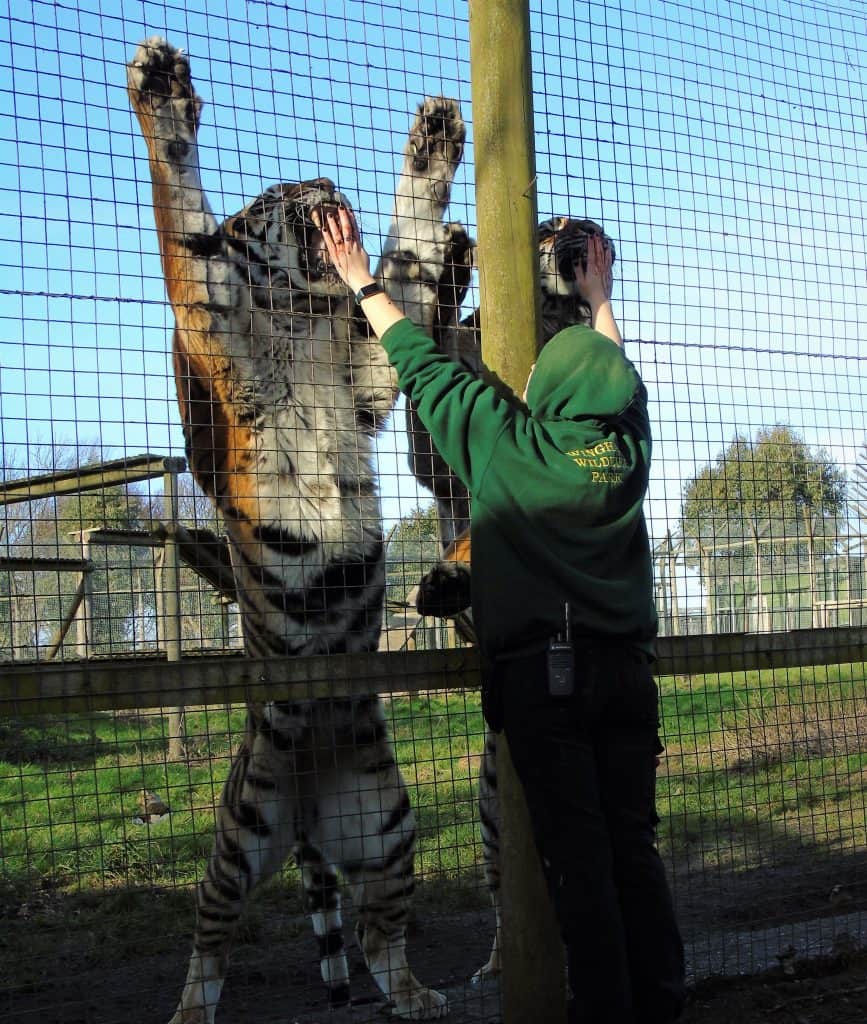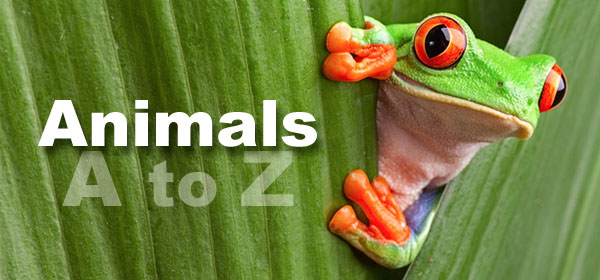On the 28th February our two boys, Troy and Blade turned 12. We decided to treat them like royalty and made them a cardboard castle, which they thoroughly enjoyed.


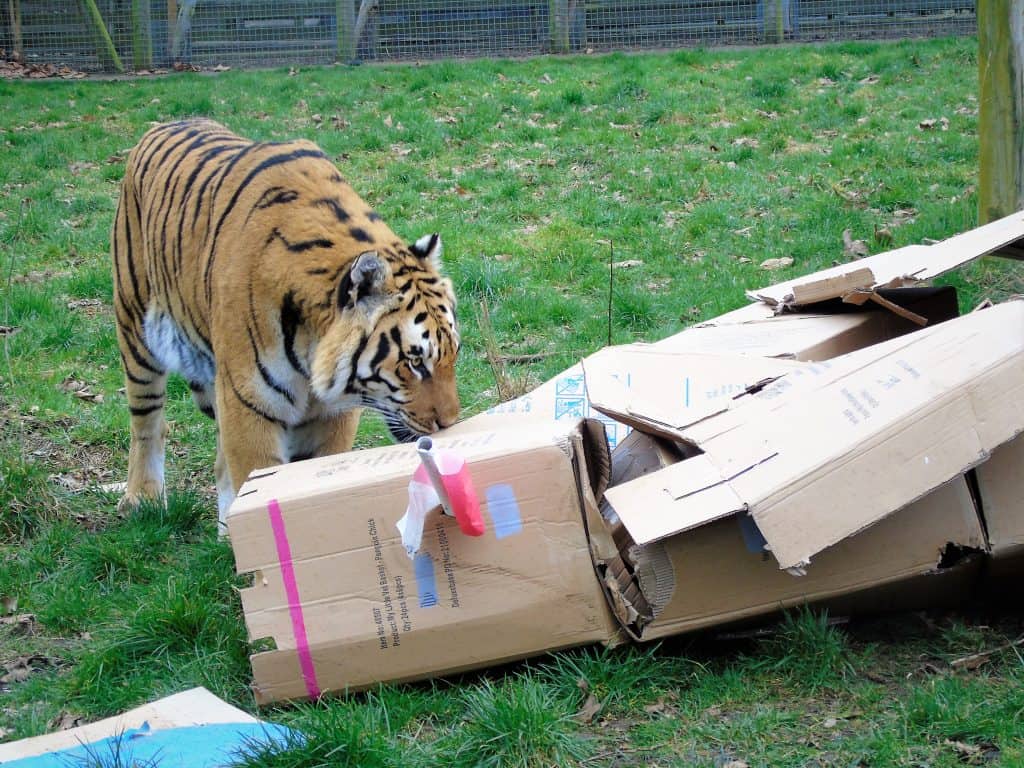
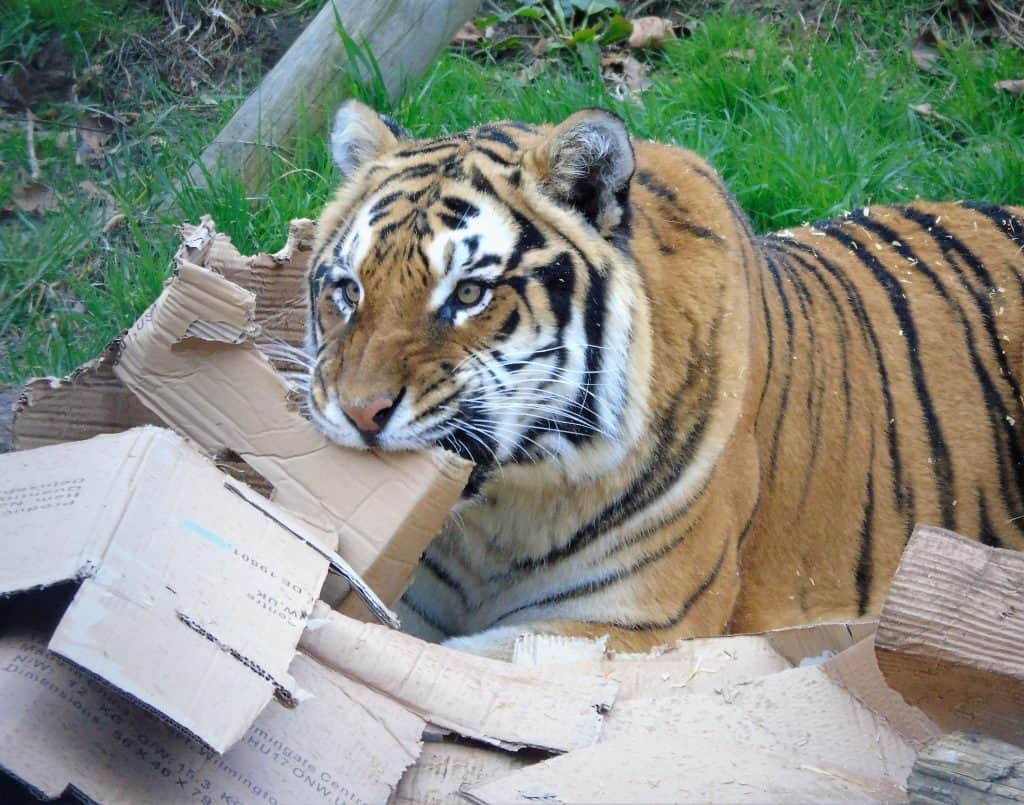
Tiger subspecies
Once there were 9 subspecies of tiger. Sadly, the Javan, Bali and Caspian tigers are all extinct. The 6 remaining are made up of the Amur (formerly Siberian), Sumatran, Bengal, Indochinese, south China and Malayan. New research has indicated a 40% increase in wild tiger populations since 2015. However, this still only suggests there are around 4,500 left in the wild. These 6 subspecies were each given their own IUCN status according to their individual population size.
Recent research
However, as of 2017 new research into the genetics of tigers has been recognised and the scientific understanding is that there are only two subspecies of tigers. These are the continental tiger and the Sunda Island tiger. Basically, the only unique subspecies today is the Sumatran. The rest are all put together into one mainland subspecies.
It is very difficult to say whether this will help save the tigers. This research would suggest we can breed any of the 5 mainland tigers together and the offspring will be fit for conservation. This doesn’t cover the individual differences between each of these types that allow them to survive in their own part of the wilderness. Subtle differences we may not have even found yet that make them fit into a niche in their own habitat. These may be lost forever without us even realising. However, it could be the price we pay to ensure we keep tigers in the world.
Suffice to say there is still a lot of room for debate around this subject as to how to proceed with regards to breeding in captivity. I don’t believe it is possible to take an individual from a warm climate and expect it to survive in Siberia. Likewise, going from cold to hot would also be difficult and this is just one difference between their ecosystems.
We all know tigers are important… but why?
The one thing all can agree on is the need to safeguard tigers. Like all big carnivores, and all animals in fact, they have a crucial role to play. As apex predators they ensure the food chain is kept intact. Ensuring there is no overpopulation of prey species to cause destruction of the local plant species.
They also remove the weaker individuals ensuring those that breed are the strongest and so pass on their genes. It will take time to decipher what actions are best in this circumstance. But the introduction of new research into tigers is always a welcome sight as it brings them back into the public eye, giving us another chance to think about them.
Our ambassadors
At least I can say with certainty our two boys are safe and sound at the centre of the park for all to admire. Their role as ambassadors is one they take very seriously and excel at.
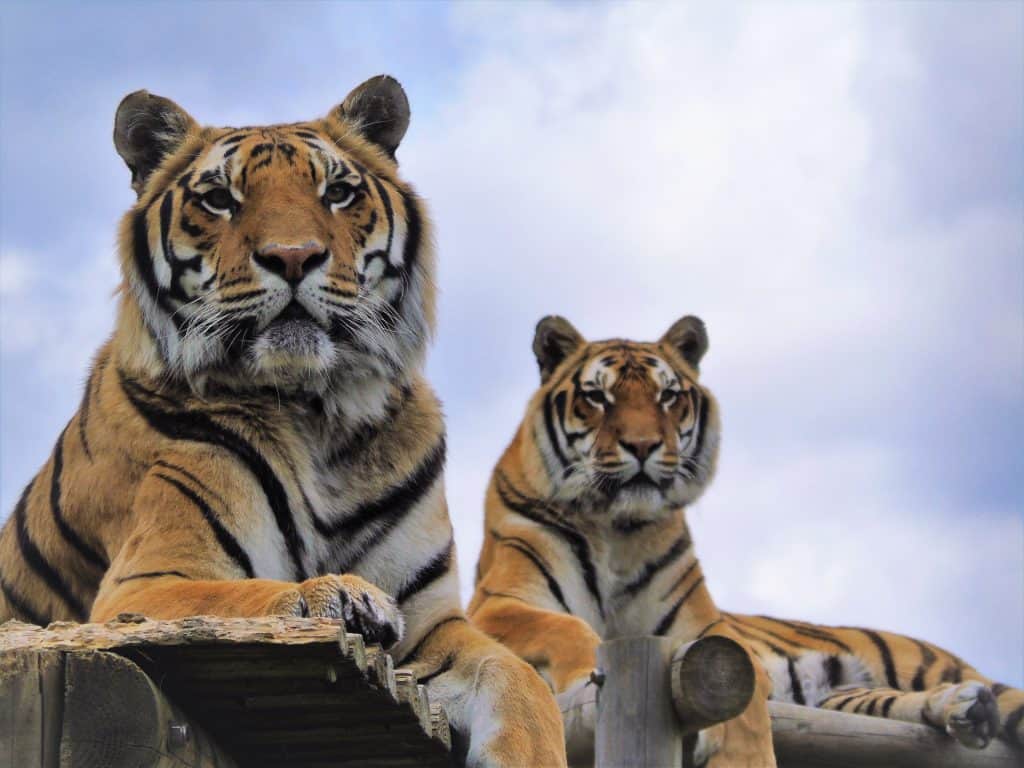
So next time you are with us at the park do join us for our tiger talk at 2:30. It takes place every day and feel free to talk to us afterwards with any questions or thoughts on this amazing species.
